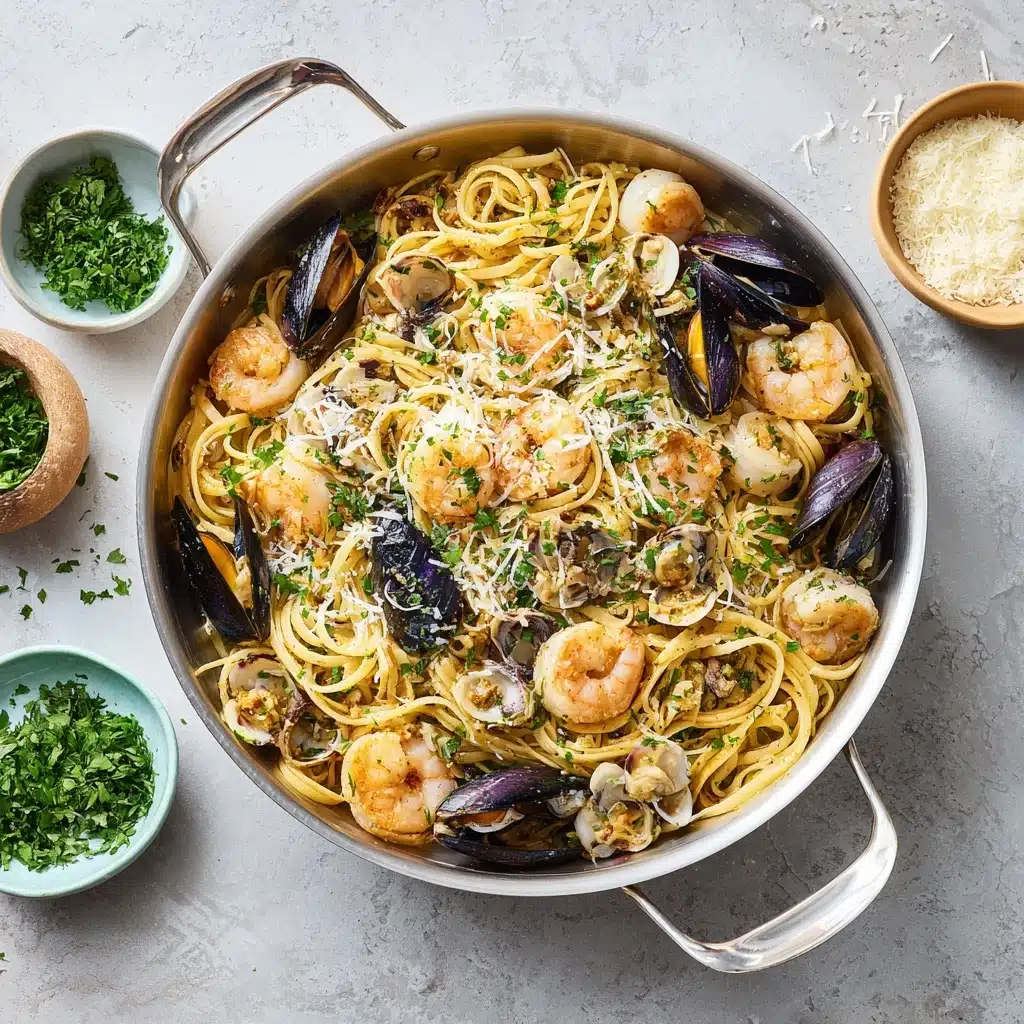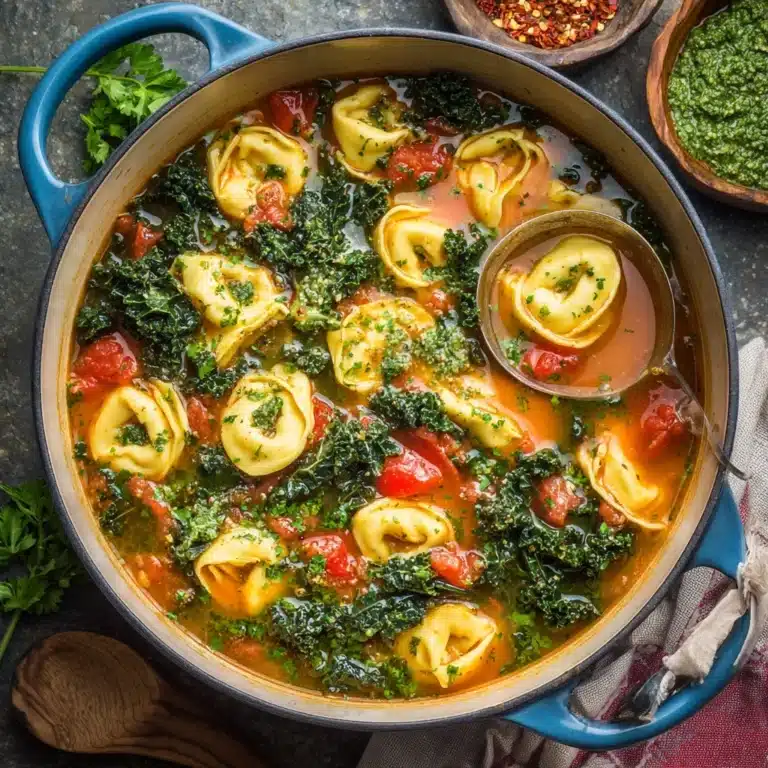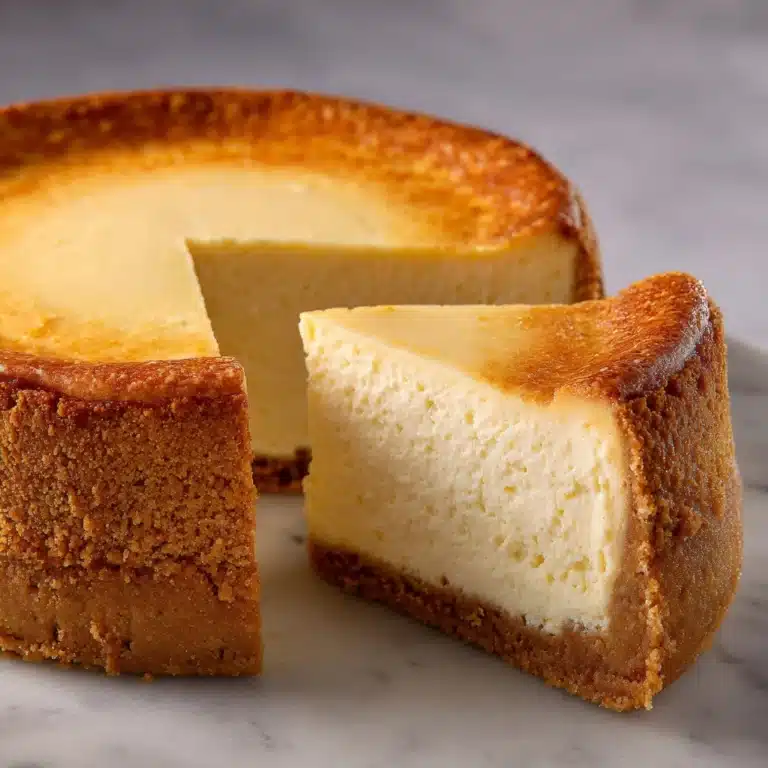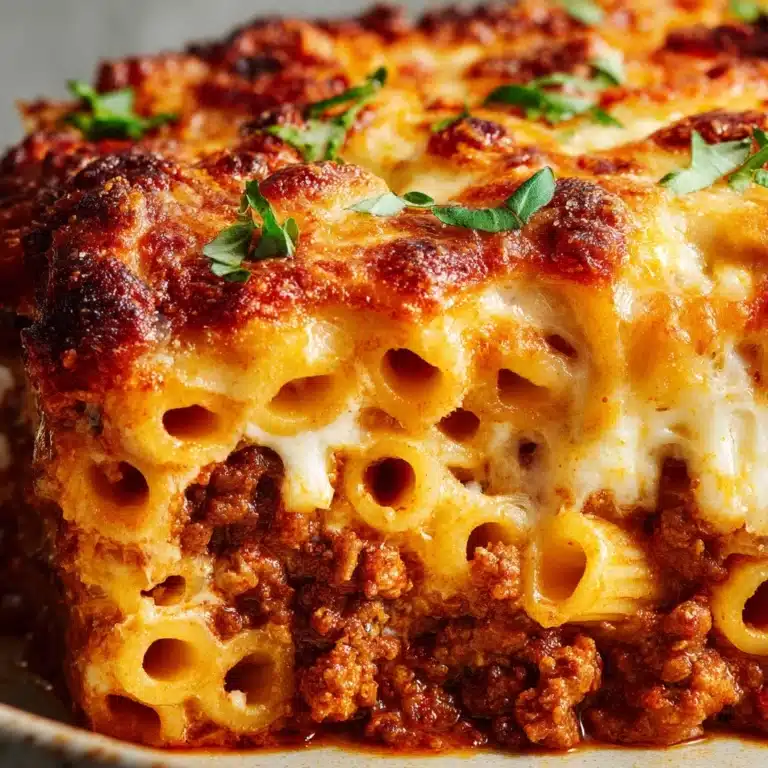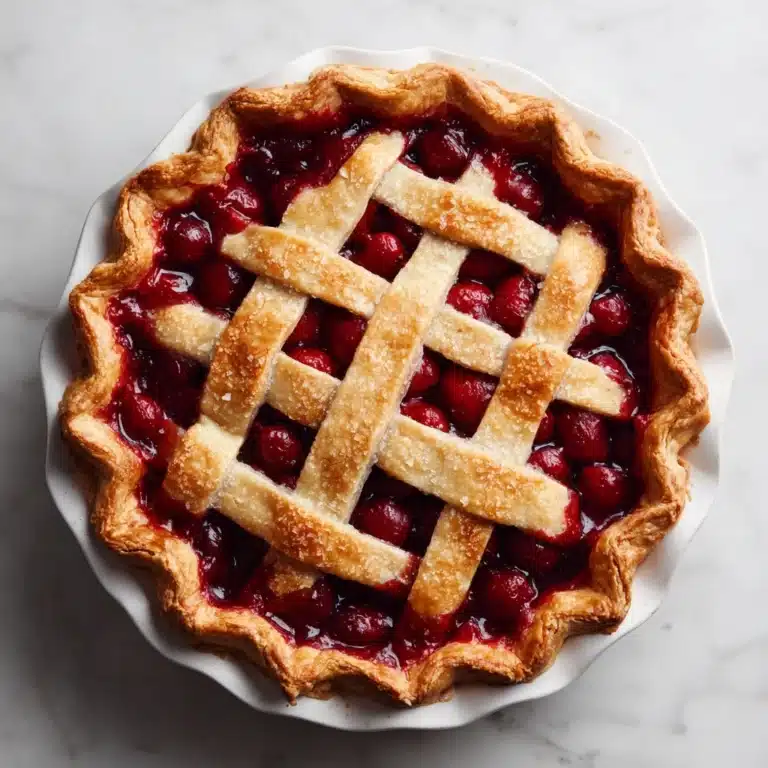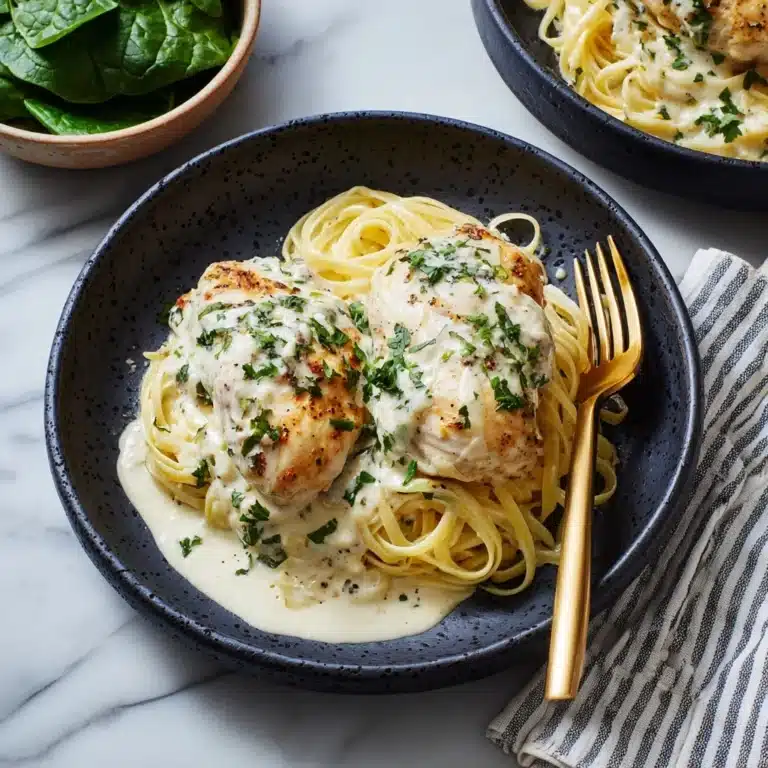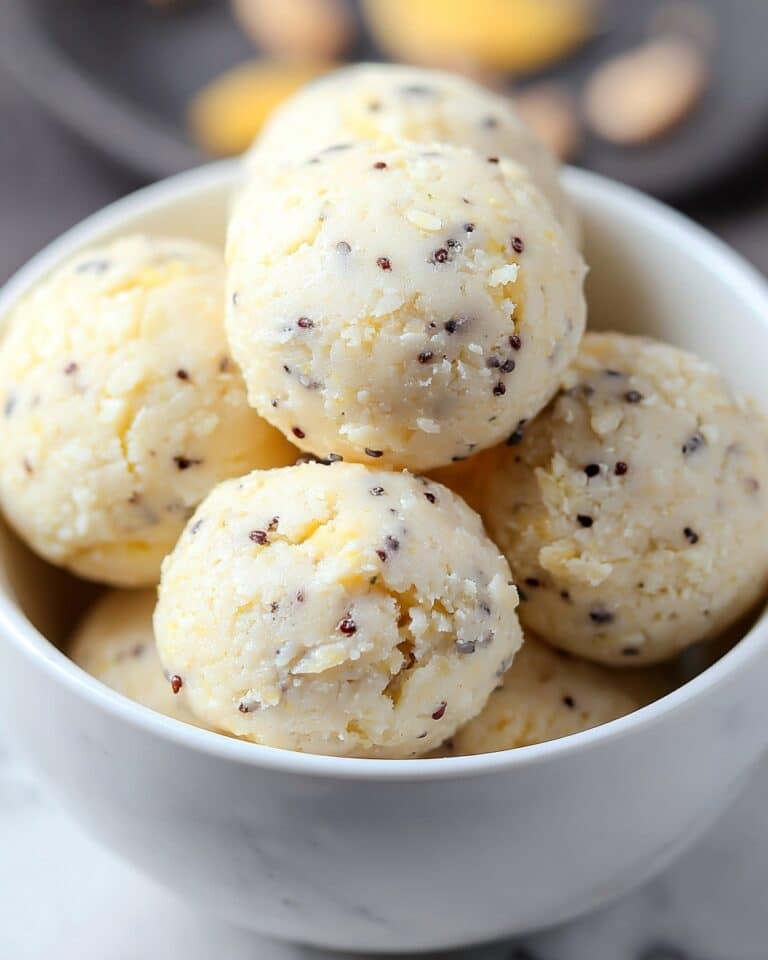If you want a restaurant-quality dinner that’s utterly swoon-worthy but easy enough for a busy weeknight, this Seafood Pasta will dazzle you every single time. Picture tender linguine wrapped in a silky, garlicky cream sauce, bursting with flavor from plump shrimp, sweet scallops, and briny mussels. The splash of white wine and bright pops of cherry tomatoes make every twirl on your fork sing, while fresh parsley and a squeeze of lemon add irresistible freshness. It’s Italian-inspired comfort—exciting, elegant, and full of personality—delivered to your own kitchen table.
Ingredients You’ll Need
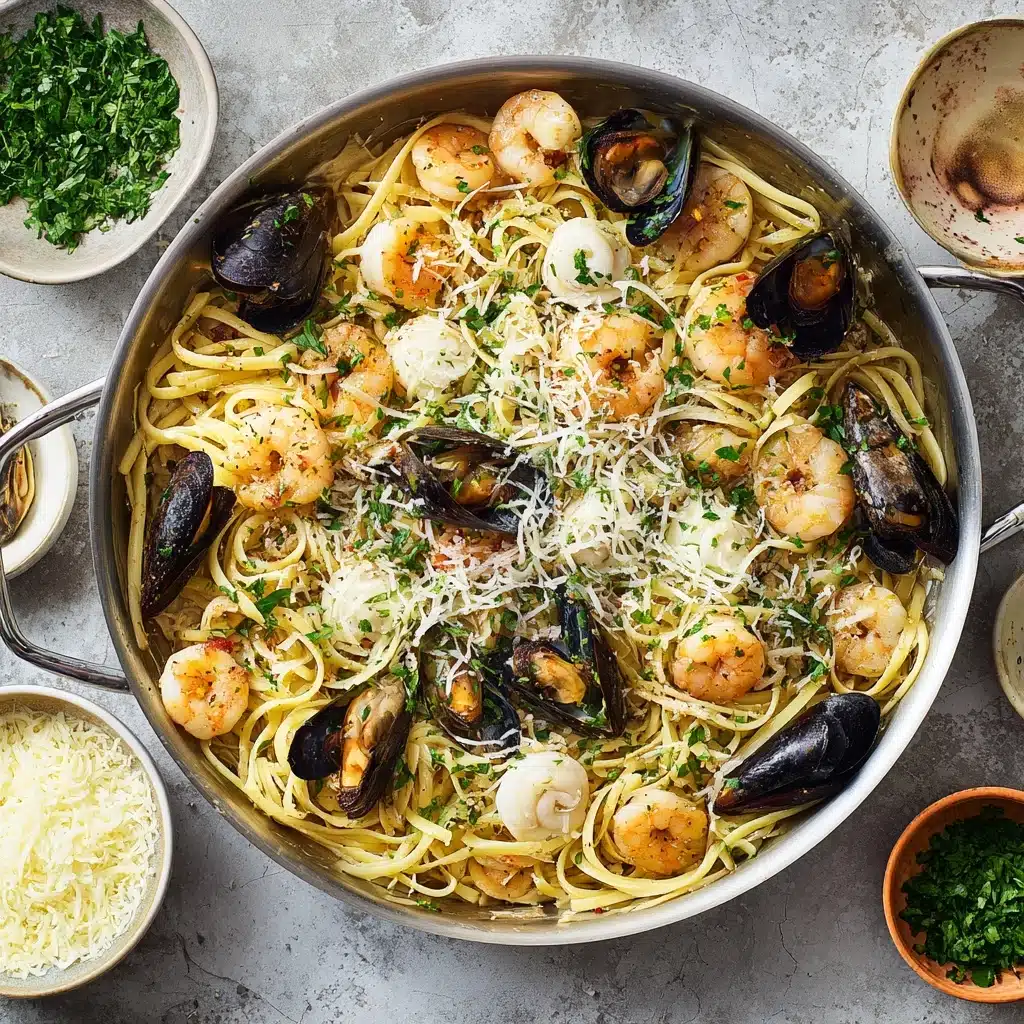
Ingredients You’ll Need
The secret to unforgettable Seafood Pasta is starting with high-quality, simple ingredients that shine together. Each element contributes its own note: succulent seafood, aromatic garlic, a hint of spice, and creamy richness all brought together by beautiful pasta. Here’s what you’ll need and why each one matters.
- 12 ounces linguine or spaghetti: Choose a long, sturdy pasta that will soak up the flavorful sauce and cradle pieces of seafood in every bite.
- 2 tablespoons olive oil: The foundation for a glossy, aromatic sauce; use extra-virgin for richer flavor.
- 3 cloves garlic, minced: Adds bold fragrance and depth—don’t skimp!
- 1/4 teaspoon red pepper flakes (optional): For a gentle heat that wakes up the sauce without overpowering it.
- 1/2 cup dry white wine: Deglazes the pan and provides acidity; pick a wine you’d enjoy drinking.
- 1 cup cherry tomatoes, halved: Their sweetness balances the brininess of the seafood and adds color.
- 1 pound mixed seafood (shrimp, scallops, mussels): Fresh or frozen, this mix creates variety in texture and taste—not to mention an impressive presentation.
- 1/2 cup heavy cream: Lends luxurious silkiness to the sauce without feeling too heavy.
- 1 tablespoon lemon juice: Brightens up everything, keeping it from feeling too rich.
- 2 tablespoons chopped fresh parsley: For a grassy, herby lift at the finish—essential for that fresh flavor.
- Salt and black pepper to taste: Vital for drawing out all those layered flavors.
- Grated Parmesan cheese for serving (optional): The finishing touch, if you love a bit of cheesy umami.
How to Make Seafood Pasta
Step 1: Cook the Pasta
Begin by boiling a generous pot of salted water and cook your linguine or spaghetti according to the package directions until it reaches a perfect al dente. Before draining, make sure to scoop out about 1/2 cup of the starchy pasta water—this liquid gold is your secret to a silky sauce later. Drain the pasta and set it aside, ready for its seafood transformation.
Step 2: Sauté the Aromatics
Warm the olive oil in a large skillet over medium heat. To the shimmering oil, add the minced garlic and, if you’re feeling adventurous, a sprinkle of red pepper flakes. Sauté for only about one minute, just until the garlic becomes fragrant—don’t let it brown. The aroma should already be making your kitchen feel like an Italian trattoria!
Step 3: Pour in the Wine and Soften Tomatoes
Next, pour in the dry white wine and bring it to a gentle simmer. This will lift all the delicious bits from the bottom of the pan and infuse the sauce with a concentrated tang. After a couple of minutes, toss in the halved cherry tomatoes and cook until they start to collapse, about three minutes. This step builds the foundation of your Seafood Pasta’s bright, tangy sauce.
Step 4: Add the Seafood
Now it’s time for the main event: add in your mixture of shrimp, scallops, and mussels. Give everything a careful stir and cook for 4 to 5 minutes, or until the shrimp turn that beautiful pink and the mussels open wide. The seafood releases irresistible juices that meld together with the tomato and wine, creating a sauce worth swooning over.
Step 5: Cream, Lemon and Seasoning
Reduce the heat slightly and stir in the heavy cream and a tablespoon of lemon juice—watch as the sauce instantly turns velvety and luscious. Season generously with salt and black pepper, tasting as you go to make sure every flavor sings.
Step 6: Toss Pasta and Finish
Add your cooked pasta to the skillet and toss it all together, ensuring every strand is coated in that dreamy seafood sauce. If the sauce feels a bit thick, splash in some reserved pasta water to loosen it up to your liking. To finish, sprinkle the whole dish with a shower of chopped fresh parsley and, if you love a cheesy touch, Parmesan. Your Seafood Pasta is best enjoyed immediately, while it’s steamy and vibrant.
How to Serve Seafood Pasta
Garnishes
Bright green chopped parsley gives your Seafood Pasta a fresh, vibrant look and a grassy flavor pop. For a little gourmet flair, you can also zest a bit of lemon over the top just before serving. And if your crowd loves richness, offer grated Parmesan at the table—but let guests add it themselves, so the delicate brininess of the seafood still shines through.
Side Dishes
Seafood Pasta is a meal in itself, but a crisp green salad with a simple vinaigrette is the perfect partner: it refreshes your palate and balances the creaminess of the dish. Crusty bread or garlic toast is another classic—ideal for sopping up every last delicious drop of sauce. For wine, a chilled glass of the same dry white wine used in the recipe almost always makes dinner feel extra special.
Creative Ways to Present
For a dinner party or romantic night in, twirl individual portions of Seafood Pasta into shallow bowls and top each with a few impressive whole shrimp or mussels still in their shells. Alternatively, serve family-style on a large platter, letting the colors and textures tempt everyone at the table. You can even use toasted breadcrumbs for a crunchy garnish or serve the pasta in pre-warmed bowls for restaurant-level comfort.
Make Ahead and Storage
Storing Leftovers
If you find yourself with leftover Seafood Pasta, let it cool to room temperature before transferring to an airtight container. It will keep in the fridge for up to two days. The seafood remains surprisingly tender, and the flavors deepen as they mingle.
Freezing
While it’s technically possible to freeze this dish, seafood and cream sauces can be a little tricky after thawing: the texture of shrimp and scallops may change, and the cream can sometimes separate. For the best results, enjoy Seafood Pasta fresh, or refrigerate instead of freezing if you can.
Reheating
Warm leftovers gently in a skillet over low heat, adding a splash of water, cream, or broth to loosen the sauce. Stir frequently and heat just until warm—avoid boiling, which can make the seafood tough. If microwaving, use a lower power setting and stir halfway through for even heating.
FAQs
Can I use frozen seafood for Seafood Pasta?
Absolutely! Just make sure to thaw it thoroughly and pat it dry before cooking. This helps avoid excess water in the sauce and ensures the best texture and flavor, mimicking the freshness of seafood straight from the market.
What pasta shapes work best for Seafood Pasta?
Long pastas like linguine and spaghetti are classic because they catch the sauce so well, but you can also try fettuccine or even tagliatelle. If you’re feeling playful, medium shapes like penne or fusilli can be fun for picking up pieces of seafood.
Do I have to use wine in the recipe?
If you’d rather skip the wine, you can substitute with a splash of clam juice, fish stock, or a little extra broth and lemon juice. The wine does add unique complexity, but you can still make a sensational sauce without it.
How do I prevent overcooking the seafood?
Keep a close eye while cooking—shrimp, scallops, and mussels only need a few minutes! As soon as the shrimp are opaque, the scallops are just firm, and the mussels have opened, take the pan off the heat. Overcooking is the enemy of tender, juicy seafood.
Is Parmesan cheese traditional with seafood pasta?
You’ll find different opinions! While some purists avoid cheese with seafood, many Italian-American home cooks love a sprinkle of Parmesan for extra richness and umami. Ultimately, it’s your kitchen—serve it how you enjoy it most.
Final Thoughts
Making Seafood Pasta at home is a little celebration every time. It’s deliciously satisfying, full of color and flavor, and never fails to make you smile. If you’re looking to create a meal that feels both comforting and a little bit special, gather your ingredients, pour yourself a glass of wine, and dive into this unforgettable recipe. Your kitchen adventure awaits!
Print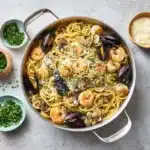
Seafood Pasta Recipe
- Total Time: 30 minutes
- Yield: 4 servings 1x
- Diet: Non-Vegetarian
Description
Indulge in a delightful seafood pasta dish that combines the richness of mixed seafood with a creamy sauce, tossed with linguine and finished with a hint of lemon and parsley. This easy-to-make recipe is perfect for a special dinner or a gathering with friends and family.
Ingredients
Linguine:
- 12 ounces linguine or spaghetti
Sauce:
- 2 tablespoons olive oil
- 3 cloves garlic, minced
- 1/4 teaspoon red pepper flakes (optional)
- 1/2 cup dry white wine
- 1 cup cherry tomatoes, halved
- 1 pound mixed seafood (such as shrimp, scallops, and mussels)
- 1/2 cup heavy cream
- 1 tablespoon lemon juice
- 2 tablespoons chopped fresh parsley
- Salt and black pepper to taste
- Grated Parmesan cheese for serving (optional)
Instructions
- Cook the Pasta: Cook the pasta according to package directions until al dente; reserve 1/2 cup pasta water, then drain and set aside.
- Prepare the Sauce: In a large skillet over medium heat, heat the olive oil. Add the minced garlic and red pepper flakes and sauté for about 1 minute until fragrant. Pour in the white wine and bring to a simmer for 2-3 minutes.
- Add Seafood and Tomatoes: Add the cherry tomatoes and cook for another 3 minutes until they start to soften. Add the mixed seafood and cook for 4-5 minutes until done.
- Finish the Dish: Stir in the heavy cream and lemon juice. Season with salt and pepper. Add the cooked pasta and toss to coat, adding reserved pasta water if needed. Sprinkle with parsley and serve with Parmesan.
Notes
- Use fresh or frozen seafood mix; thaw if frozen and pat dry before cooking.
- For extra flavor, add a splash of clam juice or fish stock.
- Prep Time: 10 minutes
- Cook Time: 20 minutes
- Category: Main Course
- Method: Stovetop
- Cuisine: Italian
Nutrition
- Serving Size: 1 plate
- Calories: 520
- Sugar: 4g
- Sodium: 600mg
- Fat: 16g
- Saturated Fat: 6g
- Unsaturated Fat: 8g
- Trans Fat: 0g
- Carbohydrates: 59g
- Fiber: 3g
- Protein: 35g
- Cholesterol: 150mg
